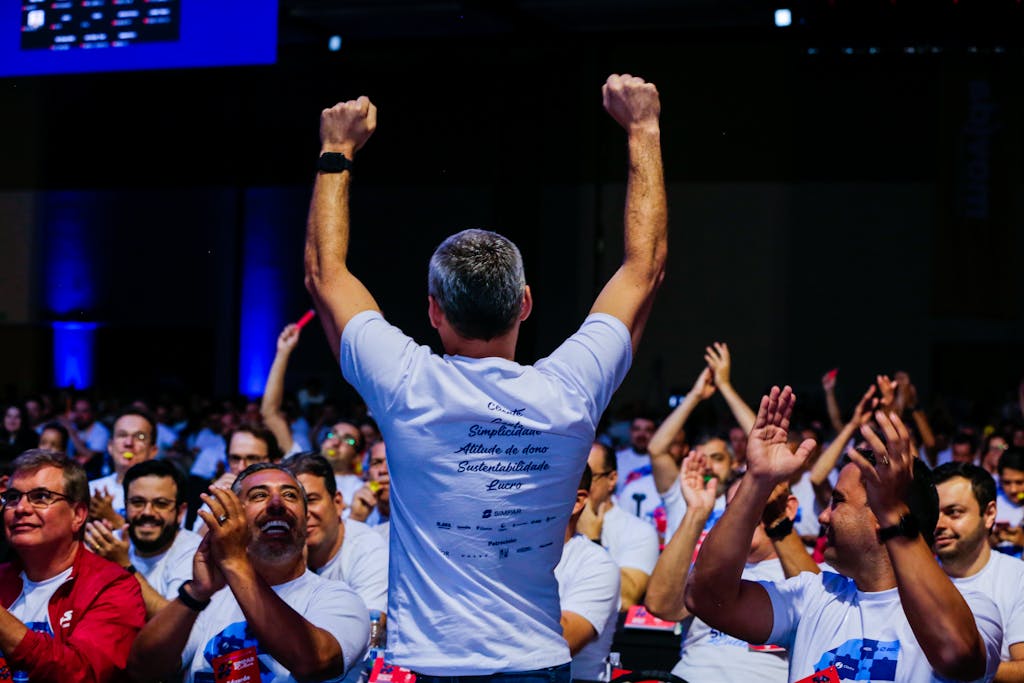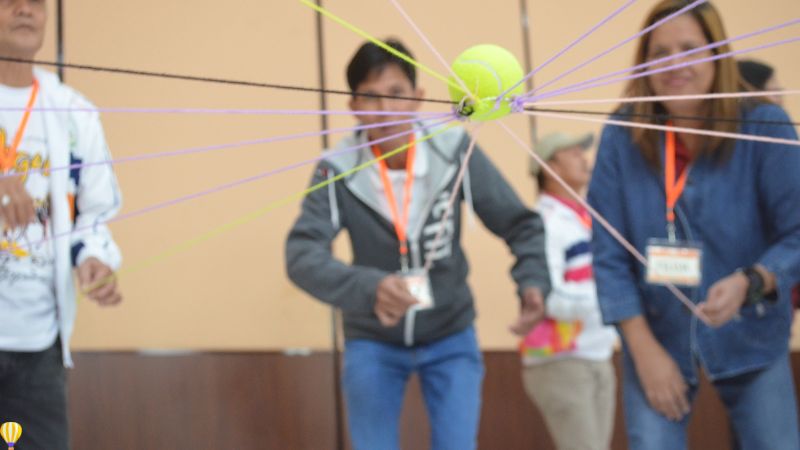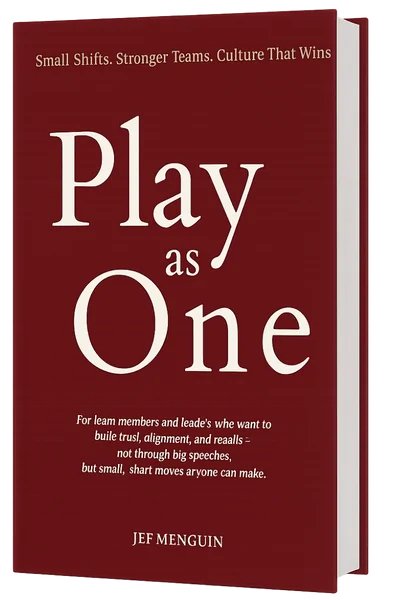“Be a team player.”
It sounds harmless, even inspiring. After all, who doesn’t want to belong, to be seen as cooperative, to carry their share of the load? But in many Filipino workplaces, being a “team player” has evolved into something else entirely. It’s no longer just about collaboration; it’s about compliance. And it’s costing us more than we realize.
Why We Love the Team Player
The team player is the ideal colleague. They are cooperative, humble, and dependable. They don’t chase the spotlight but ensure the group succeeds. They stay late to help finish tasks. They keep the peace when tension rises. They are praised in meetings as “easy to work with” and admired as “walang kaarte-arte.”
In school, the “good group mate” was the one who never complained, who adjusted for everyone else, who quietly finished the work others left behind.
In the office, the team player is the one who stays late without question, who covers for a colleague, who avoids conflict even when things feel unfair.
And to be honest, there’s something deeply admirable about that. Who wouldn’t want to work with someone who is dependable, humble, and considerate? In many ways, the team player represents our highest cultural aspirations: selflessness, cooperation, and loyalty. They embody the Filipino value of pakikisama, the ability to go along and keep the peace.
But here’s the tension: we often fall in love with the image of the team player, not in the reality of what it costs. We praise the person who keeps quiet in meetings, but rarely notice the frustration they carry home. We admire the one who never says no, without asking what they had to sacrifice to always say yes. We equate harmony with loyalty, and dissent with betrayal.
We love the team player because they make things easier for everyone else.
But the question we rarely ask is: Are they making things better, or just lighter for the moment?
The Sociological Roots: Harmony at a Cost
Filipino workplaces don’t exist in a vacuum; they mirror the larger society we grew up in. Our social DNA is built on pakikisama (getting along), hiya (the fear of shame), and utang na loob (a deep sense of indebtedness).
These values are powerful; they have held families, neighborhoods, and even entire towns together through crisis. They remind us that we are never truly alone.
But here’s where things get complicated: when these values are transplanted into the modern workplace, their meaning quietly shifts.
Pakikisama becomes less about genuine connection and more about not making waves.
Hiya stops us from asking questions in meetings, even when something doesn’t make sense.
Utang na loob makes us feel guilty for saying no to bosses or colleagues, even if the request is unfair.
The irony? These values were meant to strengthen relationships. Yet in organizational life, they often get weaponized. Suddenly, saying less is framed as loyalty, and raising concerns is branded as disrespect. What began as a tool for harmony morphs into a tool for control.
This is the tension we rarely talk about: the very values that make Filipinos resilient outside the workplace sometimes make us fragile inside it.
The Performance of Harmony
Harmony is beautiful when it’s real. It’s the quiet confidence that your team has your back, even when the work is messy or the conversations are uncomfortable. It’s not the absence of conflict, but the assurance that conflict won’t destroy the bond.
But many workplaces settle for the performance of harmony instead. Meetings are polite, emails sound agreeable, and everyone looks like they’re getting along. On the surface, things appear smooth. Underneath, frustrations build, creativity is stifled, and resentment simmers.
Why? Because the performance of harmony rewards appearances, not truth. The one who smiles and nods gets praised, while the one who dares to challenge the status quo risks being labeled “difficult.”
We end up protecting feelings more than we protect integrity.
Real harmony is not fragile. It can withstand disagreement. It can survive discomfort. The performance of harmony, on the other hand, cracks the moment someone dares to be honest. And in many Filipino workplaces, honesty is often the very thing we fear most.
The Cost of Silence
We rarely measure silence, but it has a price tag.
Every unspoken idea is a lost opportunity. Every withheld concern is a risk left unmanaged. Every avoided confrontation is a problem left to grow in the dark.
In Filipino offices, silence often masquerades as respect. “Ayaw ko na lang magsalita, baka makasakit.” (“I’d rather not speak, I might hurt someone.”) But behind that silence is a culture where truth feels unsafe. Employees stop giving feedback not because they don’t care, but because they’ve learned it doesn’t pay to be honest.
Social Psychologists call this learned behavior acquiescence, which means going along to get along. Sociologists call it social sanctioning, the fear of being excluded when you don’t conform. In practice, it looks like the quiet employee who sees a mistake but keeps it to themselves, or the manager who knows a process is broken but stays silent because “wala namang makikinig.”
The cost of silence isn’t just emotional; it’s organizational. Innovation stalls, accountability weakens, and mediocrity becomes the norm. Teams may look harmonious, but beneath that silence, they are slowly unraveling.
Beyond the Myth
The idea of the “team player” isn’t inherently bad. What makes it dangerous is the myth we’ve built around it, that to be a team player is to always agree, to never resist, to quietly sacrifice. This myth confuses compliance with commitment, and obedience with loyalty.
But workplaces don’t need more performers of harmony. They need people who can balance respect with candor, who can challenge ideas without tearing relationships apart, who can practice true pakikisama by valuing honesty as much as kindness.
The real “team player” isn’t the one who stays silent. It’s the one who speaks when it matters, even if it’s uncomfortable. It’s the colleague who asks the hard question, who points out the blind spot, who risks temporary tension to protect long-term trust.
Redefining the Team Player
The Filipino workplace doesn’t need less teamwork; it needs a deeper understanding of what teamwork really means. Our cultural values of pakikisama, hiya, and utang na loob are not the enemy; they are treasures. But when misunderstood, they trap us in surface-level harmony that looks good but costs us growth.
Being a “team player” should never mean losing your voice. It should mean knowing when to support and when to challenge, when to listen and when to speak. It’s about building trust so that honesty is not feared, but welcomed.
If you’re an employee, remember this: silence may feel safe, but it can also rob you and your team of progress. If you’re a leader, ask yourself: do you reward agreement, or do you create space for disagreement that strengthens, not weakens, the team?
The myth of the team player tells us to always say yes. The reality of a thriving workplace requires the courage to sometimes say no.
Maybe it’s time we stop asking, “Who is the best team player?” and start asking, “What kind of team do we want to build?”
Because in the end, real teamwork isn’t about keeping the peace at all costs. It’s about creating a culture where truth and trust can exist side by side. And when we achieve that, harmony stops being a performance and finally becomes real.

25 Team Building Activities for Filipino Teams: A Complete Toolkit for Leaders

The Ultimate Guide to Team Building Activities (2025 Edition)

32 Filipino Motivational Speakers Who Inspire Action




